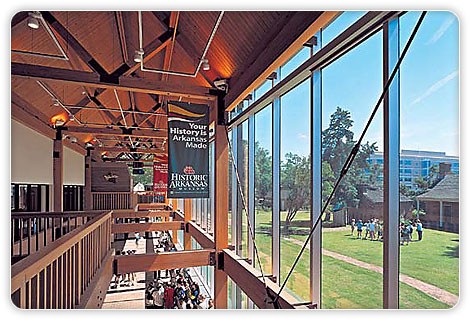Historic Arkansas Museum
Introduction
Text-to-speech Audio
Images
The Historic Arkansas Museum offers six galleries, five historic homes, and a living history museum. Image from www.littlerock.com

Backstory and Context
Text-to-speech Audio
Louise Loughborough recognized the historical significance of four shabby structures in a rundown area of Arkansas's capital city in 1939. For example, the Hinderliter Grog Shop was not only the oldest building in Little Rock, but it was also possibly the meeting place of the last Territorial Legislature. At another site on the block, the founder of the Arkansas Gazette (the oldest newspaper west of the Mississippi) had lived and printed the paper during the 1820s and 30s. The stonemason who built Arkansas' first state house also built one of the homes on the block, and a fourth house was associated with the fifth territorial governor.
Loughborough began a one-woman campaign to save the block, lobbying the Arkansas Legislature for funding to restore the buildings and have them preserved as the Arkansas Territorial Restoration. The museum formally opened in July 1941 and Loughborough directed the Arkansas Territorial Restoration for thirty years. In the 1970s, her work evolved from a simple historic preservation project into a full-scale museum. The staff began to update its methods, pursuing professional museum standards and procedures. In 1981, the Restoration became the state's first history or historic site museum accredited by the AAM (American Association of Museums). The Arkansas Museums Association named the Restoration "1981 Museum of the Year."
The institution, now as Historic Arkansas Museum, serves as the state's primary interpreter of frontier Arkansas. Each year, the museum's innovative education programs, outreach and exhibits reach more than 90,000 schoolchildren, local citizens and visitors from the other 49 states and from around the world.
